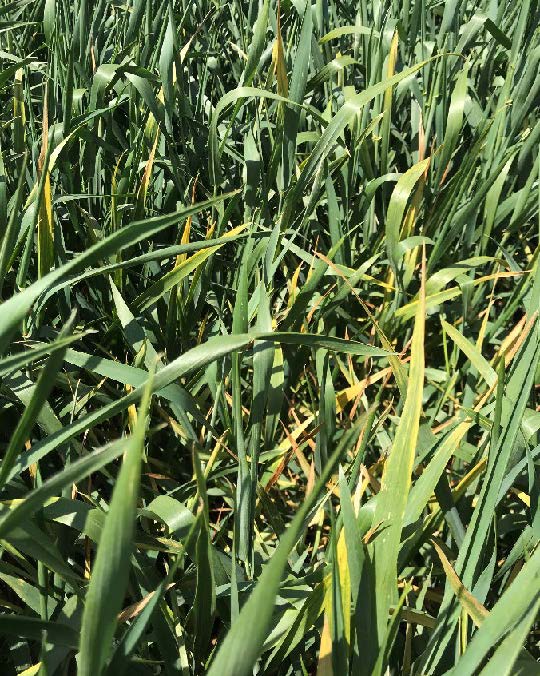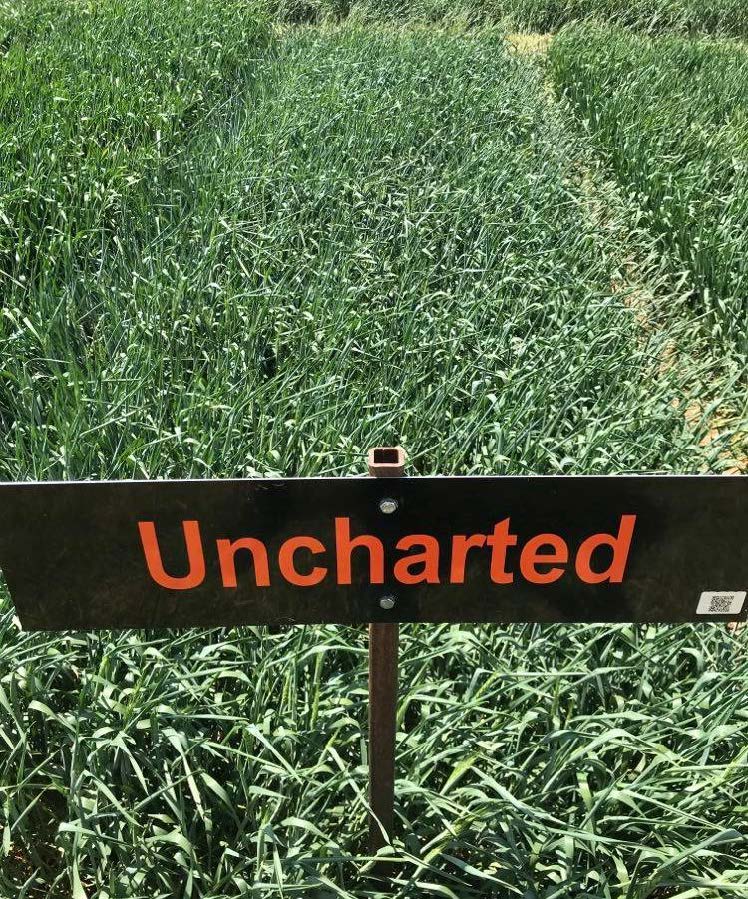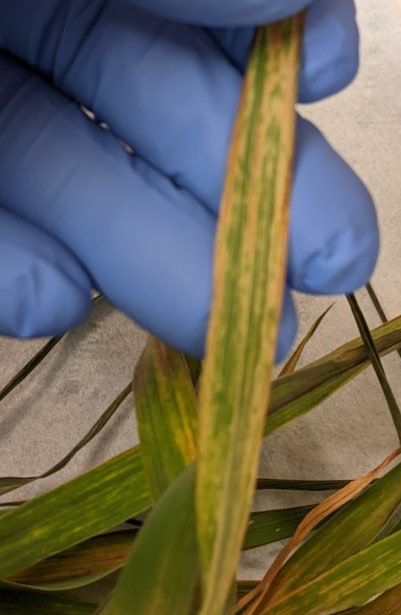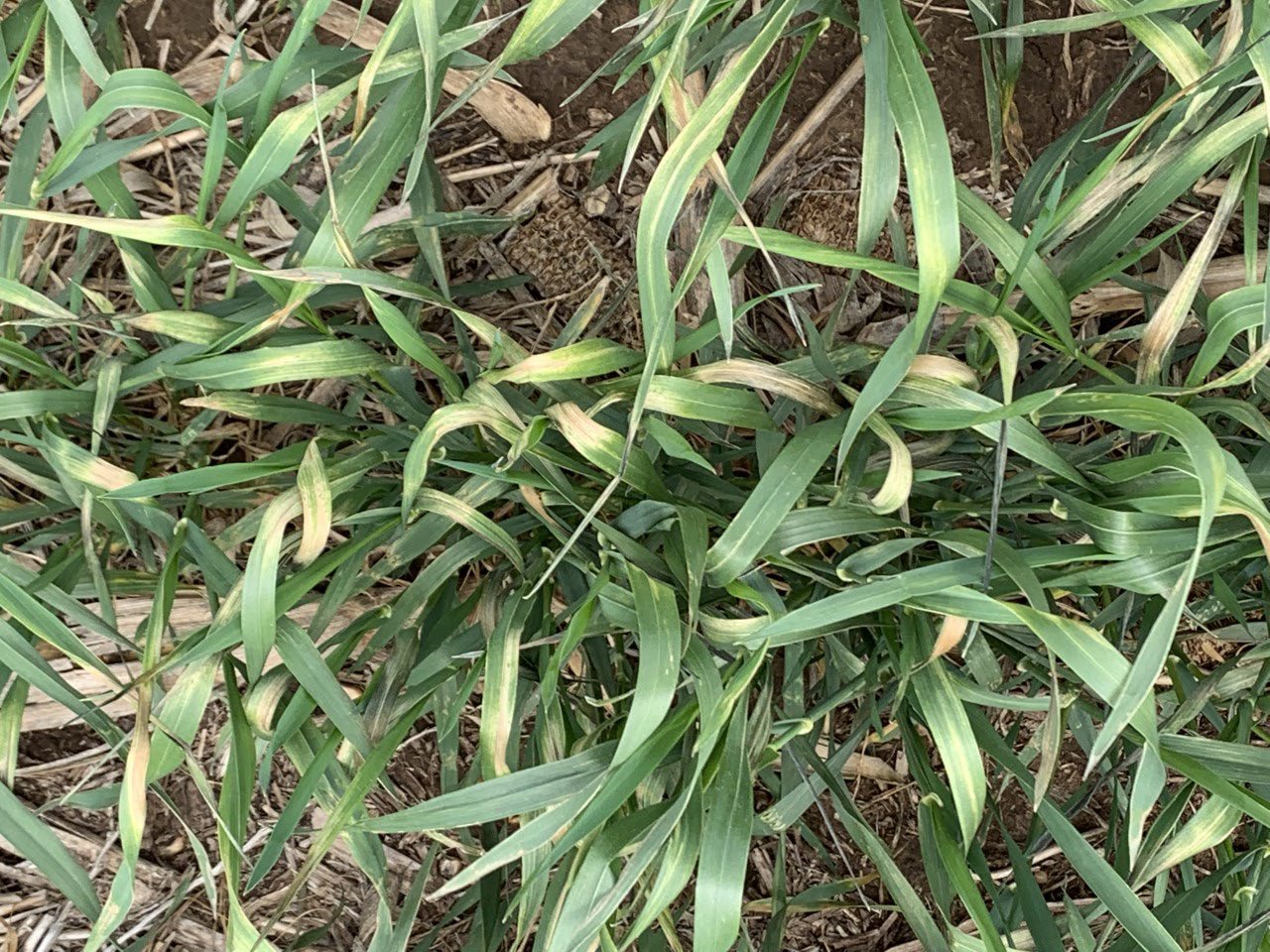Wheat Disease Update April 21 2022
In my previous update on April 12, I reported barley yellow dwarf virus (BYD) infection on the susceptible wheat variety ‘Pete’ in the BYD nursery in the Stillwater Agronomy Research Station. Last week, Dr. Amanda De Oliveira Silva (OSU Extension small grains specialist) observed yellowing of the leaf tips in most of the hard red winter wheat variety demonstration plots in Stillwater (Figure 1). We performed Enzyme linked immunosorbent assay (ELISA) on symptomatic samples from different OSU wheat varieties including ‘OK Corral’, ‘Strad CL Plus’, ‘Guardian’, ‘Baker’s Ann’, ‘Showdown’, and ‘Breakthrough’. All samples were tested positive for BYD. In these demonstration plots, the variety ‘Uncharted’, which carries two BYD resistance genes, Bdv1 and Bdv2, was the most resistant OSU wheat variety to BYD (Figure 1). Dr. Silva indicated that the plots planted earlier in September were more infected than the plots planted later in October. This shows the importance of breaking the ‘green bride’ to manage this virus which is transmitted by cereal aphids.
Figure 1. The photo on the left shows Barley yellow dwarf (BYD) infection on the wheat variety OK Corral. The photo on the right shows the BYD resistant variety Uncharted which was planted next to other infected plots. The photos were taken in the hard red winter wheat variety demonstration plots in Stillwater, OK on April, 15, 2022.
During the last couple of weeks, the Plant Disease and Insect Diagnostic Laboratory at OSU received wheat samples from Garfield, Blaine, Cleveland, and Harper counties in Oklahoma and from an unknown location in Kansas state. I examined these samples and I observed yellowing and streaking indicative of viral infection (Figure 2). I did not observe any symptoms of fungal diseases on the leaves of the received samples. For the samples received from Garfield county and Kansas state, many of the leaves were dry and brown suggesting freeze damage (Figure 3).
Some of these samples were tested using ELISA for several viruses that affect wheat in the Great Plains. The sample from Cleveland county which was collected on the wheat variety OK Corral was positive for BYD. The sample from Kansas state (from the variety ‘Zenda’) and the sample from Garfield county (from the variety ‘WB 4401’) were tested positive for wheat streak mosaic virus (WSM). ELISA for the remaining samples from Blaine and Harper counties is in progress but the symptoms suggest WSM infection.
Figure 2. Symptoms of wheat streak mosaic virus on the leaves of the wheat variety ‘WB 4401’ (Garfield county, Oklahoma on April 13, 2022).
Figure 3. Freeze damage on the wheat variety ‘WB 4401’ (Garfield county, Oklahoma, photo by Kevin Brown on April 11, 2022).




